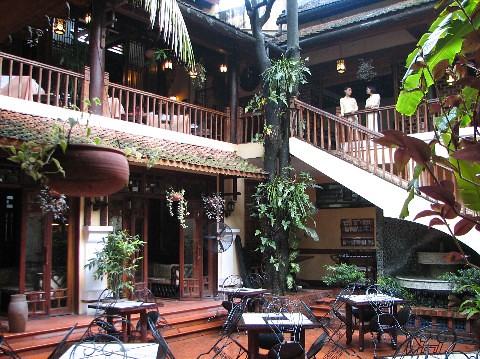1 comments
If you’re thinking about how you might recreate some of the tastes and dishes you’ve been sampling in Hanoi once you return home, roll up your sleeves and grab a cleaver. There are three very good options for spending half a day learning to prepare some of your Vietnamese favorites at a local cooking class.
If you are already home, it’s not too late. Browse our Recipes for easy dishes you can prepare at home to present a classic Vietnamese menu.
Hidden Hanoi

If you are already home, it’s not too late. Browse our Recipes for easy dishes you can prepare at home to present a classic Vietnamese menu.
Hidden Hanoi

Hidden Hanoi offers the best broad introduction to Vietnamese culinary culture. It is a small company run by a lovely Vietnamese woman name An whose mission is to share her knowledge and love of Vietnam with visitors to Hanoi. In addition to cooking classes, Hidden Hanoi also offer survival Vietnamese language classes and a variety of walking tours. Classes are fully participatory and although each student prepares the ingredients for a different dish, the whole class watches as each one is cooked and of course you get to sample all of the dishes over a shared lunch. There is no guided market visit in this program, but if you choose to pair this class with a walking tour, you can request a market visit as part of that tour.
Highway 4
Highway 4

A cooking class at Highway 4 gives you the chance to try your hand at some of Highway 4’s delicious favorites, including their famous catfish spring rolls. Their cooking class also includes a short cyclo ride through town on the way to a market visit at either Chợ Hàng Bè or Chợ Hôm, two famous neighborhood markets (although on my last visit, we walked from the Hang Tre location to Chợ Hàng Bè). The class is participatory and has the added advantage of starting early in the morning, so while you have a shared lunch to sample your cooking, the class wraps up at noon and gives you a full afternoon to explore the city.
Logistics: Highway 4 classes can be arranged every morning from 8AM – noon. Rates: Start at $52 per person for 2 people, with the rate dropping slightly with larger group size; 10 person maximum.
Sofitel Metropole Hotel
The Sofitel Metropole Hotel offers top quality dining experiences at both Le Beaulieu and Spices Garden, and presents a first class cookery option. This experience also begins with a cyclo ride to your market tour. Here, with the head chef of Spices Garden as your expert guide, you will learn about Vietnamese herbs and ingredients before heading back to the Metropole’s kitchen. While this class has participatory elements, there was a heavier focus on demonstration by the chef. The advantage is that you get to experience six dishes instead of the usual three or four. The Metropole class menus also include more sophisticated dishes such as pork cooked in bamboo, and stuffed crab with mushrooms. In lieu of a self-cooked lunch, the class moves over to Spices Garden for an elegant sampler feast prepared by the restaurant; the afternoon class (the only afternoon option for classes) includes dinner at Spices Garden.
Logistics: Sofitel Metropole Hotel classes are offered daily from 10AM - 2PM (including lunch) or 3PM – 9PM (including dinner). Rates: Prices range from $90-110 depending on day of the week and booking method. The hotel also offers a full-day Culinary Journey package that includes a morning tour of a noodle making village and ceramics village, lunch at Spices Garden, and an afternoon market visit, cooking class and tasting. Offered 8:30AM – 5:30PM daily, with rates ranging from $140-160 per person.






















